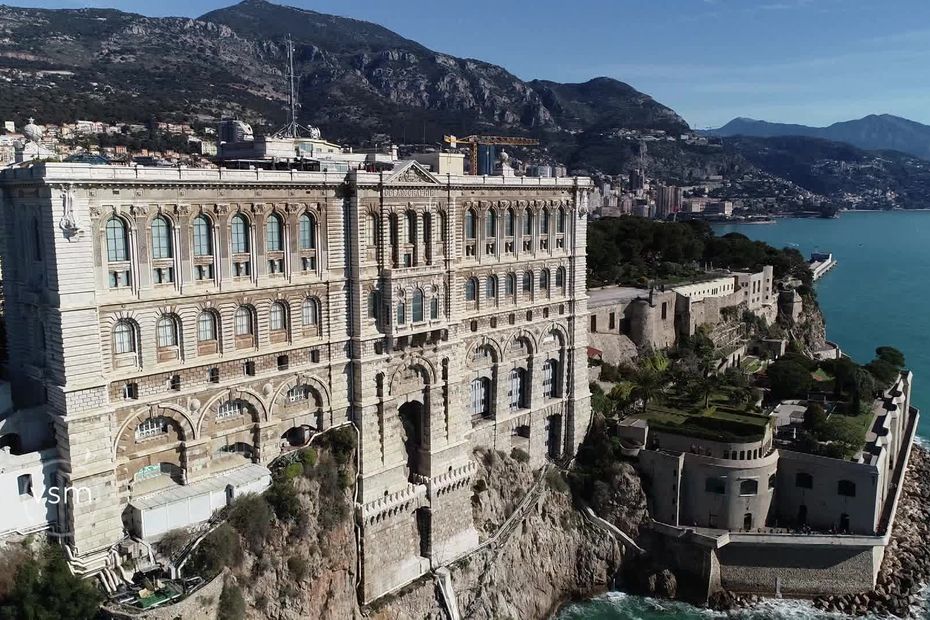
video. Dive behind the scenes of the Oceanographic Museum of Monaco with explorers, inventors and researchers
From the top of its rock, the Oceanographic Museum of Monaco has been overlooking the Mediterranean Sea for more than 110 years. And 6,000 square meters are dedicated to the secrets of the depths.
In the nineteenth century a new science emerged: oceanography. Majestic jellyfish, delicate corals, flying seahorses, guitar sharks or nurse sharks. To discover these marvels, it was necessary to go far. This “Vue sur mer” program is for explorers, but also for inventors and researchers, without whom nothing would be possible.
During his lifetime, Prince Albert Iany She has carried out more than 28 cruises in the Mediterranean, the North Atlantic, Cape Verde and even Spitsbergen. From these explorations, he brought back thousands of specimens. He was one of the first pioneers of oceanography. It was his desire to make it known and popularized.
The Oceanographic Museum of Monaco was opened in 1910. The first stone was laid in 1899. At that time, there were no cranes, the stones were transported by horses. The ones that were used to build the entire museum come from La Turbie. Then stonemasons and sculptors intervened directly on the site.
This building was designed to house the exceptional collections restored by Albert I during his oceanographic expeditions. It also has a vocation, from the outset, to open up to researchers.
The shark tank is a huge aquarium containing 450,000 liters of sea water, and in the Mediterranean there are about fifty species of sharks. Migratory animals are endangered today for some.
If these sharks only eat twice a week, the majority of Ocean Museum tenants need to eat every day, even when they’re very young.
At the Oceanographic Museum of Monaco, of the 350 species of fish in existence, the majority come from exchange or breeding within the same aquarium.
On a planetary scale, almost all sharks are threatened.
They are victims of hunting for their fins
Olivier Brunel – Head of the Aquarium Department, Oceanographic Museum of Monacoto “sea view”
They are also hunted for their skins and meat. It also has a bad reputation, which encourages some to hunt and kill it. “They only bite when they need to be fed. They are generally harmless. says the specialist. In addition, they have an essential role in the food chain because they are the ones who clean up the oceans, by eating sick animals. They are really cleaners. They have an essential role“.
Again after a two-month mission in the Indian Ocean, it was meant to do science, but also to explain why we do science and what we can learn from it, the scientists out there The Monaco Exploration Association has one mission: Mobilizing governments around protecting the oceans.
During the so-called “Harvest on Saya de Malha” expedition, scientists included benthic biodiversity, that is, that which is associated with the bottom. This area is home to one of the largest seagrass beds in the world.
More than 1,000 different species are brought back. Among them, about 300 to 400 are mollusks, the same for crustaceans, and the rest are algae specimens. Perhaps man has not yet known some of these species.
According to Gil Peseiro, Operational Director of Monaco Explorations, “The marine university is so vast, we know only a very small part of it. Currently, there are between 500,000 to 2 million possible species of which we currently only know about 250,000.”“.
The time of great explorers, such as Albert I, has passed, but another age is dawning: the age of science and the preservation and protection of our environment.
# View of the sea
Explorers, Inventors and Researchers is a 52-minute program hosted by Sophie Accarias and directed by David Bouttin.
View previous offers here.

“Organizer. Social media geek. General communicator. Bacon scholar. Proud pop culture trailblazer.”

/regions/2023/03/14/64104425125c8_albert-1er.jpg)
/regions/2023/03/14/641040d06728f_img-4587.jpeg)
/regions/2023/03/14/64105241b838f_vue-sur-mer-musee-oceanographique-de-monaco-00-42-17-08.jpg)